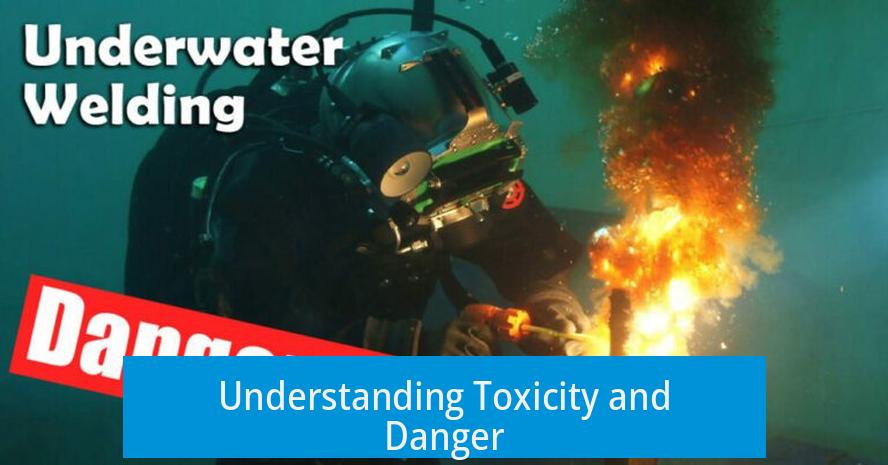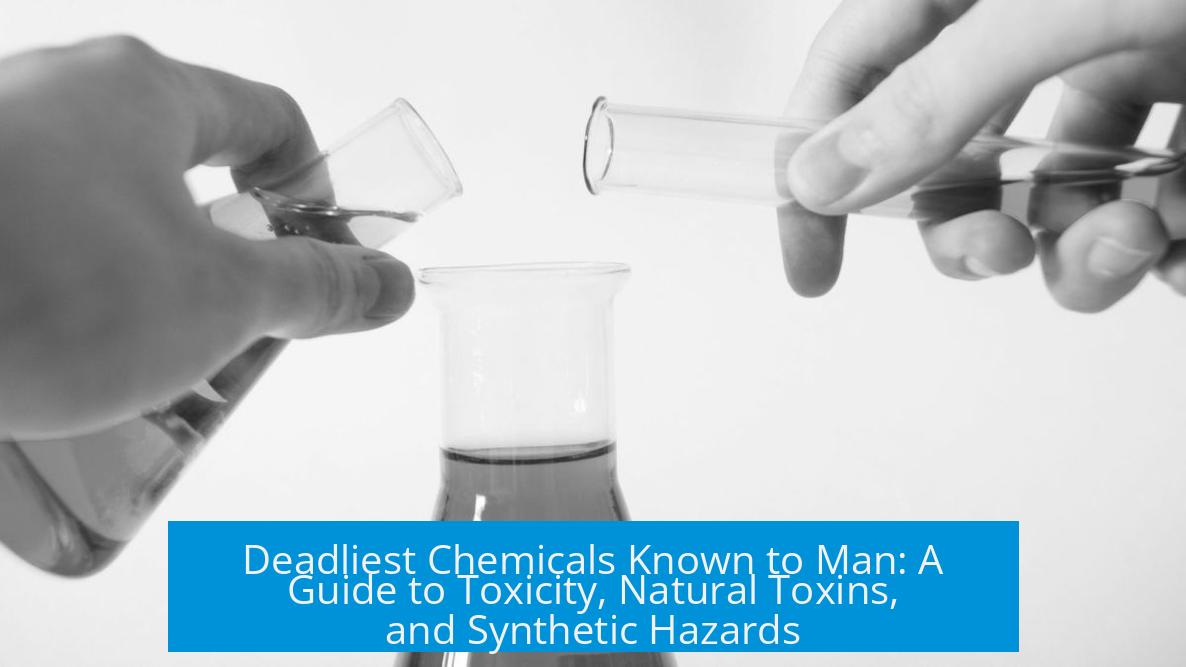Which Are the Deadliest/Most Dangerous Chemicals Known to Man?
The deadliest and most dangerous chemicals known to man include a range of natural toxins, synthetic agents, heavy metals, and radioactive elements distinguished by their extreme toxicity, lethality at minuscule doses, and capacity to disrupt critical biological processes. These substances span from potent natural proteins like botulinum toxin and ricin, to synthetic nerve agents and industrial chemicals such as dioxins and chlorinated fluorides.
Understanding Toxicity and Danger

Toxicity refers to a chemical’s ability to cause harm, typically measured by metrics like the LD50 (lethal dose for 50% of subjects). Danger, however, can include other factors such as explosiveness and reactivity.
The deadliest chemicals often exhibit toxicity at nanogram or microgram levels, making even tiny exposures potentially fatal. Both naturally occurring and synthetic chemicals feature prominently on the list.
Deadliest Natural Toxins
1. Botulinum Toxin
Produced by the bacterium Clostridium botulinum, botulinum toxin is arguably the deadliest naturally occurring substance. It blocks nerve signals, causing paralysis and death even at extremely low doses.
Interestingly, botulinum toxin is widely used in controlled doses for medical and cosmetic purposes such as wrinkle reduction, despite its inherent lethality.
2. Ricin
Ricin is a potent toxin derived from castor beans. It inhibits protein synthesis inside cells leading to cell death. Even minute amounts can cause multi-organ failure and death.
3. Misfolded Prion Proteins
Prions are misfolded proteins that induce other normal proteins to misfold, causing fatal neurodegenerative diseases such as Creutzfeldt-Jakob disease. A single misfolded prion can theoretically initiate these diseases, making it uniquely lethal at the molecular level.
4. Nicotine
Although more familiar as a plant alkaloid found in tobacco, nicotine is highly toxic and one of the commonly encountered deadly compounds. It acts on the nervous system, causing seizures, cardiac arrest, and respiratory failure in overdose.
Highly Toxic Synthetic Chemicals
5. Organophosphate Nerve Agents
These compounds, which include well-known chemical warfare agents, inhibit the enzyme acetylcholinesterase. This blockade causes continuous nerve signal transmission leading to muscle spasms, respiratory failure, and death rapidly if untreated.
6. Sodium Fluoroacetate (1080)
This synthetic pesticide inhibits the citric acid cycle enzyme cis-aconitase, effectively halting cellular metabolism and causing metabolic arrest in almost all cells, leading to death.
7. 2,4-Dinitrophenol (DNP)
Originally produced as a TNT byproduct, DNP acts as an uncoupler of oxidative phosphorylation. It disrupts ATP synthesis, causing the body to generate excess heat while failing to produce energy, leading to fatal hyperthermia.
8. α-PVP (“Flakka”)
A synthetic drug of abuse, α-PVP is neurotoxic. It induces severe hyperthermia, muscle breakdown, and organ failure, producing a violent physiological and psychological reaction that can be fatal.
9. Dioxins (2,3,7,8-Tetrachlorodibenzo-p-dioxin)
Dioxins are highly toxic synthetic compounds known for their environmental persistence and bioaccumulation. They cause cancer, reproductive and developmental problems, immune system damage, and can be lethal in high exposures.
10. Chlorine Trifluoride (ClF3)
Chlorine trifluoride is an extremely reactive and corrosive chemical. It ignites materials, including many normally nonflammable ones, upon contact and can cause severe chemical burns and fatal injuries.
11. Fentanyl
Fentanyl is a synthetic opioid notable for its extreme potency. A mere 2 milligrams can be lethal in humans, making it a significant cause of overdose deaths worldwide.
Deadly Heavy Metals and Radioactive Substances
12. Dimethylmercury and Diethylmercury
Organic mercury compounds like dimethylmercury are highly neurotoxic. Even small skin exposures can lead to fatal mercury poisoning. The case of Karen Wetterhahn is a grim example of its extreme toxicity.
13. Lead
An element responsible for widespread chronic poisoning. Lead accumulates in the body causing neurological damage, kidney failure, and death over time. Its historical impact on human populations is profound.
14. Polonium
Polonium-210 is a radioactive element emitting alpha particles, highly toxic if ingested or inhaled. It causes rapid radiation poisoning and death.
Other Noteworthy Dangerous Chemicals
- Water (Dihydrogen Monoxide): While essential for life, in large amounts it can cause fatal water intoxication or drowning.
- T-butyl Lithium: Highly reactive, this compound can cause fires and explosions on contact with air or water.
- Mixing Bleach and Ammonia: Produces chloramine gases, extremely toxic and dangerous when inhaled.
- Ciguatoxin: A marine toxin causing food poisoning.
- PFOS and PFAS: Persistent synthetic chemicals that accumulate in the environment and human tissues, potentially causing long-term health impacts.
How These Chemicals Affect the Body
| Chemical | Primary Target | Mechanism of Toxicity | Outcome |
|---|---|---|---|
| Botulinum Toxin | Nervous system | Blocks acetylcholine release | Flaccid paralysis, respiratory failure |
| Organophosphate Nerve Agents | Nervous system | Inhibits acetylcholinesterase | Convulsions, respiratory arrest |
| Sodium Fluoroacetate | Cellular metabolism | Inhibits citric acid cycle | Metabolic arrest, multi-organ failure |
| 2,4-Dinitrophenol | Cellular mitochondria | Uncouples oxidative phosphorylation | Fatal hyperthermia |
| Dimethylmercury | Nervous system | Neurotoxic heavy metal poisoning | Neurodegeneration, death |
| Fentanyl | Opioid receptors | Respiratory depression | Respiratory failure |
Summary of Critical Points
- Deadliest chemicals range from natural toxins (botulinum toxin, ricin) to synthetic nerve agents, heavy metals, and radioactive substances.
- Small doses can cause death by disrupting vital functions such as neural transmission, cellular metabolism, or causing organ failure.
- Many lethal compounds are not commonly encountered, but some, like nicotine and fentanyl, pose frequent risks due to their widespread use.
- Environmental toxins like dioxins and persistent chemicals like PFAS present long-term health challenges.
- Some substances like prions uniquely cause fatal diseases through protein misfolding rather than chemical toxicity.
- Highly reactive and corrosive chemicals (chlorine trifluoride, t-butyl lithium) pose physical and chemical dangers beyond toxicity.





Leave a Comment